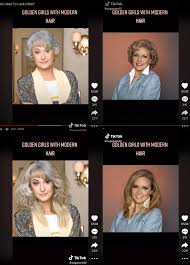
Introduction: A Cultural Icon
‘Golden Girls’, which aired from 1985 to 1992, remains a significant part of American television history. The series, which featured four women—Dorothy, Rose, Blanche, and Sophia—living together in Miami, tackled various social issues with humor and heart. The show’s portrayal of older women defied stereotypes and paved the way for more diverse representations of age in media.
Overview of the Show
Created by Susan Harris, ‘Golden Girls’ was groundbreaking for its time. It brought together an all-star cast, including Bea Arthur, Betty White, Rue McClanahan, and Estelle Getty. The series provided audiences with relatable stories about friendship, love, and the challenges of aging. The show’s humor and heartwarming moments resonated with viewers of all ages, securing its legacy as a classic.
Impact and Relevance Today
The impact of ‘Golden Girls’ extends far beyond its original run. The show has found renewed popularity through streaming services, allowing a new generation to discover its charm. Iconic lines and memorable moments have entered pop culture, from catchphrases to memes. The series is often cited in discussions about the representation of women and aging in television, reinforcing the idea that stories about older characters can be both funny and significant.
Conclusion: A Lasting Influence
‘Golden Girls’ is more than just a television show; it is a cultural phenomenon that has influenced countless productions in Hollywood. As the stigma surrounding aging continues to diminish, the relevance of ‘Golden Girls’ remains pertinent. It reminds us that friendship knows no age limits, and the laughter shared among friends can help navigate even the toughest of times. Looking ahead, the show’s legacy will likely inspire future creators to continue exploring stories about older characters, ensuring that ‘Golden Girls’ will remain impactful for years to come.



